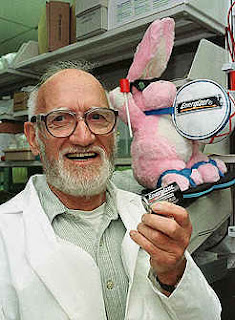Ostrich Pillow, a portable device said to “enable power naps".
...
From BizDom Blog
Showing posts with label Invention. Show all posts
Showing posts with label Invention. Show all posts
New Inventions For Common Problems

Upstanding Toothbrush
When the toothbrush is set down, it will sway momentarily until it reaches a balanced position - just like a tumble doll.
Bladeless Fan
Dyson fans use...
Inventions & Inventors: Guglielmo Marconi

Italian physicist and inventor who is credited with the invention of radio or wireless telegraphy. Guglielmo Marconi was born in a wealthy family of Bologna. In 1895 he was able to...
Celebrity Invention 1

Inventor: Samuel Clemens (Mark Twain) had three patents on inventions of his own.
Mark Twain (Samuel L. Clemens) received his first patent (#121,992) for the "Improvement in Adjustable...
The story of "Silly Putty"

Silly Putty was introduced as a toy by Peter Hodgson, a marketing consultant, who packaged one-ounce portions of the rubber-like material in plastic eggs.
It can be stretched, rolled...
Trivia Post: First alkaline battery

In 1955, Eveready moved researcher Lew Urry from an office in Toronto to its Cleveland plant and told him to come up with a better battery. At the time, the state of the art was the...
Trivia Post: What was invented by Bartolomeo Cristofori ?

Bartolomeo Cristofori di Francesco was an Italian maker of musical instruments, and is regarded as the inventor of what would become the present-day piano.
The Cristofori piano action,...
DISCOVERING X-RAYS

X-rays are a type of radiation can penetrate materials that light can not. These rays allow us to "see" inside objects (for example, the human body) without opening them.
The story...
The first digital camera

This is a prototype digital camera Kodak produced way back in 1975. The “toaster-sized” system relied on a cassette tape for recording data. The digitized images took 23 seconds to...
Subscribe to:
Posts
(
Atom
)





























